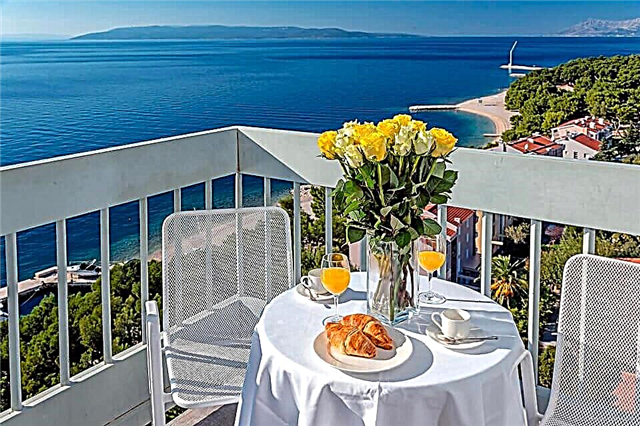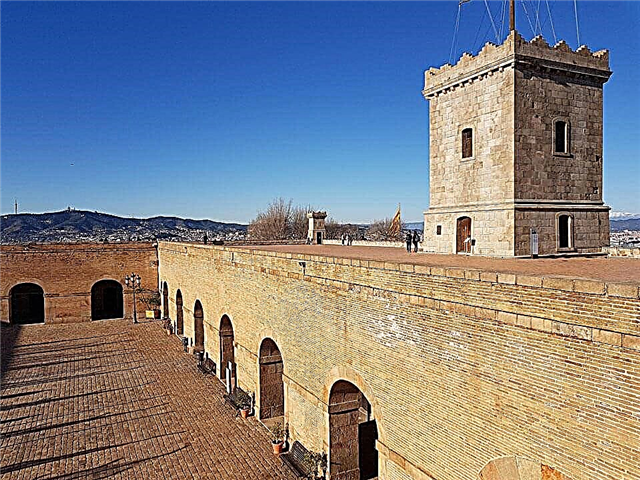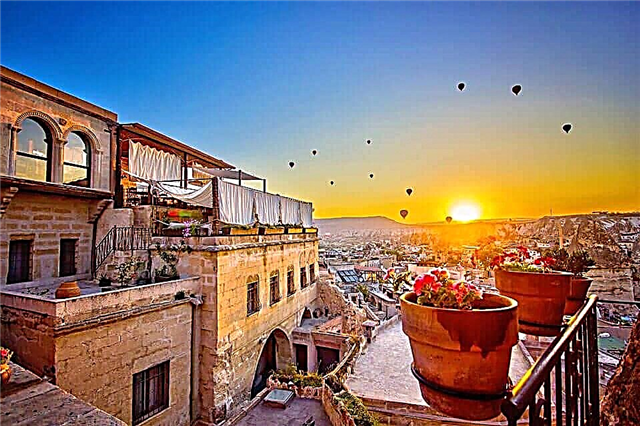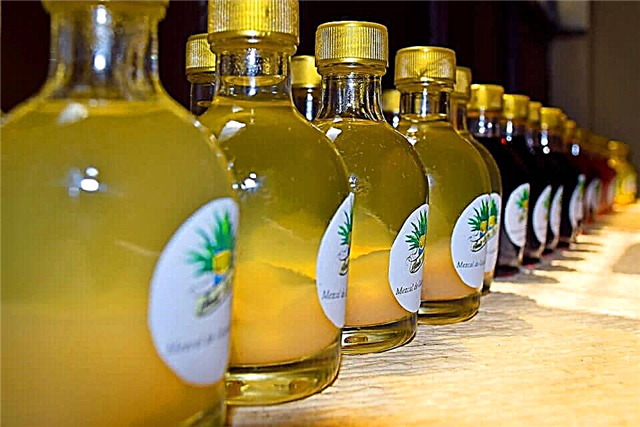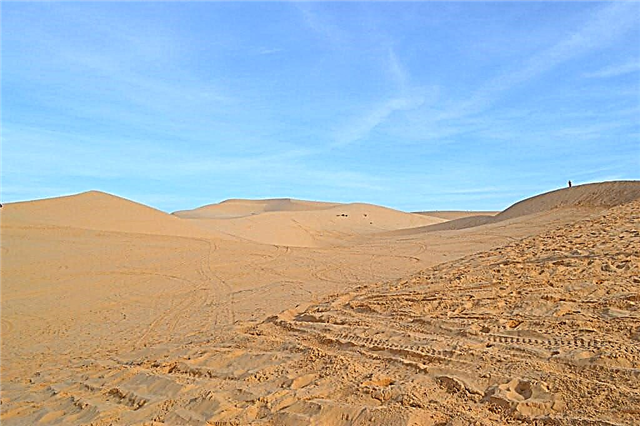The popular resort of Mui Ne is located on the coast of the South China Sea in Vietnam. Once on the site of this resort area there was a small fishing village of the same name. Later, the sea coast with its sandy beaches and favorable warm climate began to attract beach lovers here. As a result, hotels for holidaymakers appeared in Mui Ne, which subsequently formed a whole chain along the seashore and almost adjacent to the city of Phan Thiet. The rapidly developing Vietnamese resort today attracts tourists not only with the opportunity to soak up the warm sea and lie on the sandy shore. Mui Ne has a number of attractions that can interest any vacationer. Among such significant places that you should definitely visit in the first place, you can name a huge statue of the reclining Buddha.
Reclining buddha
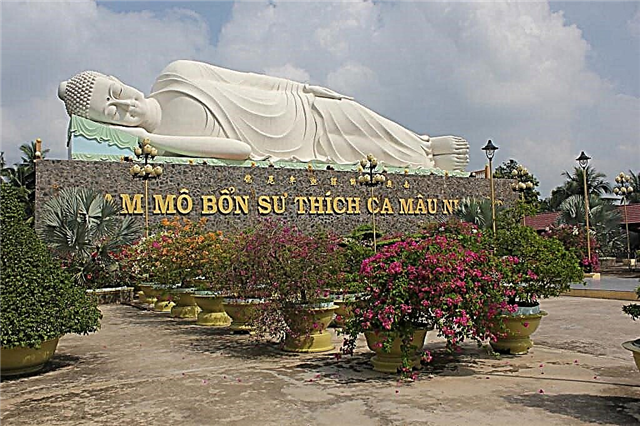
This huge 49-meter statue, known all over the world, is the largest of its kind in Vietnam. Many people call this sculpture the Buddha who goes into nirvana. To get to this unusual sculpture, you need to climb the 700-meter summit of Mount Taku, which is located to the south of Phan Thiet at a distance of 28 km. The entire statue is painted white, symbolizing the purity of Buddha's thoughts. There is a belief that in order to fulfill a cherished desire, it is necessary to climb the sacred Mount Taku and hold the Buddha by the elbow.
Then it will certainly come true. In addition to the Buddha statue, on this hill is the sacred Pagoda - a Buddhist religious building visited by pilgrims to perform their traditional religious rites. The construction of the Pagoda, begun in 1960, continues to this day. This Buddhist structure is allowed to be visited by tourists who, together with pilgrims, can make donations for the construction of the temple.

The sacred place on the mountain has been ennobled and equipped. Here you can rest on one of the stone benches, and the stone tables can be used to attract wild monkeys by laying out treats for these jungle dwellers. Until recently, the sacred mountain was climbed only along a narrow path through the jungle. Since 2002, a funicular began to operate here, and tourists, together with pilgrims, can climb to the top of Taku in a few minutes.
Cham towers of Poshanu

Among the places of worship visited by pilgrims and tourists in Mui Ne, the Cham Towers of Poshanu occupy a special place. And this is no coincidence, since the Cham towers represent the surviving part of the former huge temple complex, built in the 7th century. This temple was built in honor of the god Shiva. Time did not spare this building, leaving to descendants only three towers symbolizing Hindu religious buildings, including temples: the princess Poshanu, the sun and the cow. Despite the antiquity of the structures, parishioners regularly visit the temples. Near the existing temples, there is a well-groomed area with lawns and a garden, along which not only the ministers of the temple and parishioners can walk, but also tourists. Everywhere in the territory of the temple complex, there are stone benches where you can relax and admire the surrounding views.

The ancient towers were restored from time to time, as a result of which the outer red brick masonry was replaced in almost all places, but the inside of the tower retained its original appearance. In the semi-dark temple, the aroma of incense and the reverent atmosphere of a place sacred for Hindus are constantly felt. This sense of holiness and antiquity is heightened in the twilight after sunset, when the towers are illuminated with multi-colored lights and look spectacular against the dark southern night.
Binh Chau mud bath

In addition to ancient and modern religious buildings, it is worth visiting the Binh Chau mud bath. Despite the fact that this mud bath, which has gained popularity among visitors, is located at a distance of 113 km from Mui Ne, its mud springs attract tourists and visitors from almost all of South Vietnam with their healing properties. Based on the use of healing mud, a famous spa center has been created here, where you can not only relax, caring for your own body and skin, but also heal joints, nervous system and other vital organs. Interestingly, after applying the healing mud to the skin, it becomes elastic and silky.
Naturally, it is impossible to achieve immediate results of mud treatment in a couple of days. However, it is quite possible to enjoy mud treatments and bathing in hot mineral water. Moreover, all conditions have been created for this. A well-groomed tropical park, a chain of restaurants and hotels create a favorable atmosphere for relaxation in this water resort. Many local mineral springs have temperatures ranging from 18 to 80 degrees, and each of the visitors of the resort chooses on his own in the water with what temperature he should take a healing bath. Naturally, too hot water is not suitable for bathing, but they also found use here. Water, close in temperature to boiling water, is enclosed in containers resembling eggs in shape. Therefore, tourists are offered to cook ordinary chicken eggs here as entertainment.
Dalat

Dalat city is another unique place that should be paid attention to. The city is located at an altitude of 1.5 thousand meters above sea level. The peculiarities of its favorable climatic conditions were once studied by the French scientist A. Ersen, who devoted a significant part of his life to Vietnam. The outskirts of Dalat are covered with evergreen coniferous forests, among which there are many picturesque lakes and waterfalls. All this creates conditions for the formation of a mountain resort town. The healing air of the mountains is always warmed up to a comfortable temperature that does not fall below +20 degrees throughout the year. Therefore, Dalat is also called the city of eternal spring. To get to it, you need to overcome the mountain road winding serpentine, moving along which you can admire the stunning landscapes.

The attention of everyone who is in Dalat for the first time is attracted by an unusual building with an intriguing name “Crazy house”. Perhaps the building is named so because you can find everything in it at once: a hotel, a cafe and an art gallery. In addition, they continue to build an unusual house, and its architecture has a rather peculiar style. If desired, each visitor of the hotel can spend the night in any of the original rooms, each of which displays a particular animal and is even named after him. Here you can stay in the room of giraffes, or a kangaroo, bear or any other animal. In addition, Dalat is famous for its amazingly delicious candied fruits, fresh strawberries harvested here throughout the year, as well as local wine and coffee.
Fairy Stream

Within Mui Ne there are sights that are also worth seeing with your own eyes. This is a fishing village and Fairy Stream. The real fishing village can be easily reached by passing the hotel area. The promenade near the village is dotted with local fishmongers, and the brightly colored fishing boats in the sea look like toys from afar. When dusk falls, lights are lit on each of the boats, and the entire body of water looks like a night sky strewn with bright flashing stars.

Heading towards the Fairy Stream, you can visit a small aviary. Here tourists will be offered to taste cane juice, as well as an unusual entertainment - riding on ostriches. The stream flows out of a small waterfall and flows into a shallow stream, along the bottom of which you can even walk on foot. The high banks of the river are inaccessible rocks and sandy hills. In some places, you can climb the canyon ledges and walk along the rocky coast, admiring the bamboo groves and palm trees.
Kega lighthouse

In the vicinity of Mui Ne, the Kega lighthouse, operating since 1899, is another unique attraction. For the construction of the lighthouse, all the necessary materials were delivered directly from France. Built during the French colonization, it rises 65 meters above sea level. Therefore, in order to climb to its observation deck, it is necessary to overcome as many as 183 steps, moving along a spiral staircase.
The sailors of the ships passing by can still navigate by the Kega lighthouse, which is visible in clear weather from a distance of 10 km. The lighthouse rises above a promontory dotted with huge boulders, among which the hundred-year-old frangipani trees amaze everyone who has visited this area with their fragrant white flowers.
White and red dunes

The white and red dunes located near Mui Ne attract tourists, especially children who use the red dunes for skiing. White dunes are of interest to tourists not only for their unusual beauty and similarity with the landscapes of the Sahara desert. Among the creamy piles of sand there is a lotus lake. It is definitely worth watching how these flowers, revered in Vietnam, slowly bloom towards the rays of the rising sun. For the sake of this unforgettable sight, you can sacrifice a sweet dream at dawn and come to admire the rose petals opening towards the new day.

